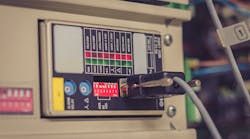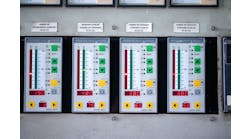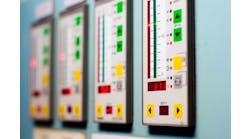The Industrial Internet of Things (IIoT) has influenced all aspects of industrial automation and continues to push component design to use open infrastructure to drive data collection and analysis and better production. From predictive maintenance to artificial intelligence, machines are growing more connected and more autonomous, including each of their components, and variable frequency drives (VFDs) are no exception. Five manufacturers—SEW Eurodrive, ABB, Nidec, Bosch Rexroth and Danfoss—discuss how digital technology is influencing VFD design. For more on current market trends for VFDs, read “Flexible design brings VFDs to wider market.”
Real-time drive data
“The Industrial Internet of Things (IIoT) is enabling faster and simpler communication to collect device data from machines,” says Leo Young, business development manager, drive and automation, at SEW Eurodrive. “Connected VFDs are providing the real-time drive data for maintenance and service teams to better understand and provide predictive maintenance. This drive data is also collected for analysis by the plants to help optimize their processes and energy efficiency. IIoT technology is the catalyst for connected devices to collect real-time system data, which can be used for increasing throughput, flexibility and quality, while reducing waste, energy consumption, downtime and manufacturing costs. Today’s VFDs are reporting real-time system analytics and performance data used to calculate machine usage, throughputs, energy consumption and device health, which is used for process optimization to improve efficiency, uptime and manufacturing quality.”
Remote condition monitoring
“Industrial plants are demanding more information to improve operational efficiency and help schedule predictive maintenance,” says David Orlikowski, LV drives regional engineer at ABB. “The first step in the process has been to remove hardwired I/O and add the VFD to the industrial network. This allows for control from PLCs and information to be stored in a data historian/SCADA system. The second step has been the addition of remote condition monitoring of critical equipment controlled by VFDs. This allows technicians to remotely monitor and solve VFD issues before they lead to downtime.”
Intelligent sensors and drives
“High connectivity has become a standard requirement for VFDs,” says Joao Serralha, press officer for Nidec Control Techniques. “These are viewed more as intelligent sensors that provide real-time information on themselves and the motors they drive and other downstream mechanical components. Additionally, drives and motors are becoming sensor hubs, facilitating the collection of temperature or vibration measurements. These can be used for predictive maintenance or other monitoring purposes.”
This is also driving a comeback of the intelligent drive, continues Serralha. “In the past, distributed intelligence mainly was about logic and motion control. However, an intelligent drive can now act as an edge side pre-processor, pre-analyzing data and reducing the bandwidth needed to push it to the cloud,” explains Serralha.
Machine product lifecycle
“IIoT and Industry 4.0 have affected new designs for VFD products to make them accessible through an Ethernet network,” says Joaquin Ocampo, product manager for automation and electrification at Bosch Rexroth. “This also affects the need for more flexibility through software. The VFD will require more software functions to create useful information from the data that is being acquired. This handling of data may require higher-level languages to accomplish the foreseen results. It may require OpenSource code to integrate with other software functions to realized connectivity.”
The VFD may have to provide more information to make the analysis of an operation easy to monitor. “This information is vital to obtain the best quality products from the machine, says Ocampo. “Information such as speed, position, motor temperature and torque may have to be provided. IIoT and Industry 4.0 assist in monitoring for operational efficiency. The information can show how efficient a machine is. Another advantage is maintenance and troubleshooting—using sensors on the machine to pinpoint the area that has issues. This way, there is less time wasted trying to figure out where the problem is located, and with smart diagnostics software the operator can see what part needs to be fixed or replaced. The software can quickly identify the part and if required can order the part for replacement and/or spare.”
Machine product lifecycle can be accomplished with IIoT, adds Ocampo. “The ability to know what to do before a unit fails, where a part of the machine is not functioning in optimal conditions due to wear and tear or from an outer impediment, having notifications go to smart phones or smart tablets when something abnormal is occurring in the machine—this can also be done with artificial intelligence when the machine learns what a good production run should look like and automatically detects a production run is defective,” he says.
Equipment chain monitoring
“Applications such as condition-based monitoring are opening up VFDs and other equipment to broader connectivity requirements,” says Miles Mahaffy, manager of North America Application Development Center at Danfoss. “Not only are the devices monitoring their own control requirements, but they may also be part of a larger system monitoring the entire equipment chain. This requirement for connectivity is driving more services, such as edge computing for local monitoring, cloud services to monitor and store data remotely and analytics to process the data.
For more on and challenges for the VFD market and future predictions, read “Tall order: 4 market challenges for VFDs”






